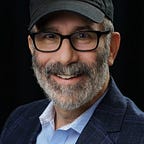Look for the Zebras: Medical Mysteries, Transformational Moments, and the Meaning of Our Work
When it comes to uncommon conditions, it’s an Olympian challenge for doctors to connect the diagnostic dots.
Medical students have been taught: “When you hear hoofbeats behind you, think horses, not zebras.”
In medicine, the response “I don’t know” is now an act of courage.
Not too long ago, our family joined the rare disease community. For years, our child exhibited a multitude of disconnected symptoms that all seemed to have separate explanations — if they had explanations at all. The growing list included dizziness, rapid heart rate, stomach aches, rib pain, joint pain, and others.
The symptoms accumulated, along with a cascade of diagnostic tests and specialist appointments. So, too, did the hours of speaking (or negotiating) with our health insurance carrier. Along the way, we encountered all sorts of personalities in this spider-web health ecosystem — some bewildered and frustrated; most compassionate and wanting to help our child.
The boldest among them were willing to listen and confess their own uncertainty. In medicine, the response “I don’t know” is now an act of courage.
As medicine has become more specialized, it has also become increasingly fragmented. Add to that the complexity of electronic medical record systems with limited interoperability. Specialists face “telephone-game” obstacles just to access colleagues’ clinical notes and diagnostic data for a shared patient.
When it comes to uncommon conditions, it’s an Olympian challenge for doctors to connect the diagnostic dots. Over time, they may even become frustrated with their patients. In the case of young female patients, for example, there is often gender bias and an assumption that the puzzling symptoms must be “in their heads.”
Medical students have been taught: “When you hear hoofbeats behind you, think horses, not zebras.” Usually, the more common explanation is the correct diagnosis. However, with rare diseases that don’t have an absolutely clear genetic path, it’s almost impossible to arrive at a quick and confident diagnosis. With little access to accumulated information about their patients, savvy doctors must rely more and more on their patients’ input to help solve medical mysteries.
Information, communication, and advocacy make up the bridge linking doctors and patients — as long as the provider and payer are open to listening and giving patients a seat at their table. In the medical sector, it’s not unusual for the gatekeepers to feel that they are “in the know.” Physicians seeking to help, yet feeling helpless when their initial diagnoses and treatments do not solve the problem(s), often begin to treat symptoms. Over time, the system ends up paying more and more money for that same patient. The underlying cause of the symptoms remains unaddressed. Or, clinical assumptions become straws grasped at by desperate people. No one wins.
This two-decade journey to arrive at my child’s diagnosis has reinforced for me that it’s all about the passion of individuals — parents, physicians, payers, policymakers — who wake up every day looking for solutions. Health technologies will begin to force our fragmented health system to converge around information.
Artificial intelligence will start to illuminate needle-in-the-haystack problems, helping us to engage earlier, provided that those staring at printouts think about both the common and uncommon possibilities and the data are available and accessible.
I have seen what works and what is broken within the health ecosystem. I serve on patient advocacy boards and participated in the Centers for Medicare and Medicaid Part D Working Group — great collaborations to improve public health. I’ve been privileged to work with companies that pioneer newly discovered therapies and to witness first-hand the lives they transform.
I have also experienced the disconnect in coordinating patient care. In my own work, I seek to integrate these lessons to benefit clients and, most importantly, the patients they serve. There is no escaping the complex realities of the health system in the United States — it is vast, fragmented, and (mis)organized around how physicians are compensated, how they collaborate, and even how much time they can spend with each patient.
While information may become “artificial,” the relationship between physician and patient must grow closer if we are to arrive at “intelligent” answers.
For those of us whose work touches patient care and public health, we need to merge our own personal experiences with the vision for why this work matters. Remember this work directly touches people’s lives. Working in the health communication field is my passion.
That four-decade mission, along with my training and experience as a combat medic and a clergy member, is more focused than ever, as a professional and a parent. Give thought to how you can bond with others to change the course of care.
Our family’s lives were changed by one cardiologist who had the courage to utter a simple sentence: “You need a team.” Her idea to put one together should not have been so revelatory, nor so atypical, but it was.
Look to the clients and recognize that through them, we have an opportunity to make a real difference. Recognize that information, awareness, and finding advocates is a life-saving effort, and that effort is all about being part of transformational moments.
